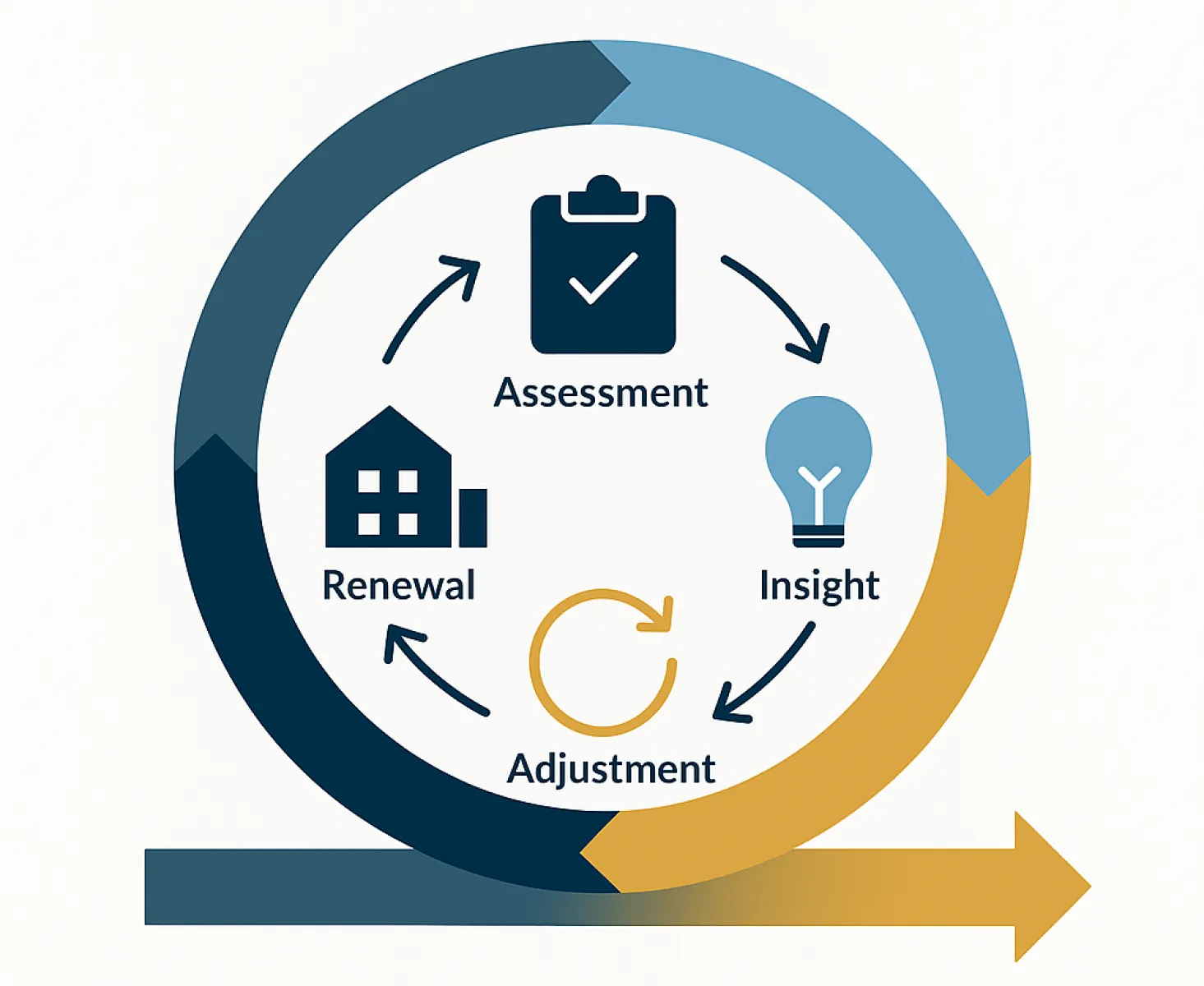
Why Cyclical Property Valuations Still Matter

Why Cyclical Property Valuations Still Matter: Even When Insurance Feels Cheap
In today's soft property insurance market, it is tempting for companies to ease up on valuation discipline. Carriers are lowering premiums, and coverage is often more generous, creating a sense of financial ease. However, regularly updating building and contents valuations is not merely a "best practice"; it is a strategic maneuver. This article explores why cyclical valuations remain a smart play that helps risk managers stay sharp, ensures insurer accuracy, and instills confidence in the C-suite.

Understanding the Cycle and Its Risks
A soft market is characterized by increased competition
among insurers, leading to lower premiums, relaxed underwriting, and broader
terms. While these conditions are financially beneficial, it's wise for
companies to remain vigilant and use this period strategically.
The relaxed nature of a soft market can sometimes lead to
complacency with a lack focus on ensuring assets are valued and insured
accurately. If property is inadvertently underinsured, this coverage gap might
not become apparent until a significant loss occurs.
Maintaining valuation discipline is the key to significantly
reducing the risk of costly surprises.

Strategic Benefits of Robust Valuations
Treating valuations like a simple compliance checkbox—such as adjusting values with random inflation factors—is a missed opportunity. It is akin to using a GPS only to confirm one is on a road, when the tool could be showing traffic, shortcuts, and hazards ahead. Valuation data is not just a formality; it is a strategic navigation system for smarter risk decisions and broader corporate planning.
Accurate values alongside robust COPE (Construction, Occupancy, Protection, Exposure) information mean not only better coverage terms but also a solid foundation for justifying asset value in post-loss scenarios.
Assessing company property on a cyclical basis allows risk managers to:
Proactively understand market shifts by leveraging fresh and relevant data.
Provide clear insights for stakeholders and maintain transparency into how assets evolve.
Reveal changes in asset condition, usage, or replacement cost.
Furthermore, current property data allows risk managers to align with financial reporting standards (e.g., IFRS, GAAP), meet internal audit requirements, and demonstrate fiduciary responsibility to stakeholders. This data supports better decision-making in risk mitigation, asset management, and capital planning.
Why Valuations Are a Strategic Investment
Allocating a small fraction of Total Insured Value (TIV) to valuations is justifiable and strategic, providing benefits that far outweigh the cost:
Strategic Justification |
Impact and Benefit |
|---|---|
It's Less Than a Rounding Error |
Valuations typically cost 0.01% to 0.05% of TIV—a drop in the bucket compared to the potential cost of underinsurance, claim disputes, or misallocated premiums. If your TIV is $100 million, you're talking $10K-$50K for peace of mind and strategic clarity. |
Avoid the "Oops" Moment During Claims |
Outdated or inaccurate values can trigger co-insurance penalties, claim shortfalls, or coverage denials. A valuation performed today can save millions tomorrow. |
Better Data = Better Decisions |
Valuation reports provide granular insights into asset age, condition, and replacement cost trends. This data supports risk profiling, budgeting, and capital planning—not just insurance procurement. |
Strengthens Negotiating Power |
Accurate valuations help brokers and insurers tailor coverage, optimize limits, and justify premium adjustments. The investment secures leverage in negotiations. |
Construction Costs Are Not Static |
Inflation, supply chain shifts, and labor costs can swing dramatically. Outdated valuation data is unreliable and risky in a volatile economy. |
Supports Governance and Transparency |
Boards and auditors prefer clean, current data. Regular valuations demonstrate that the company is proactive, not just compliant. |
Uncovers Hidden Gaps |
Many organizations discover uninsured assets, duplicate entries, or misclassified buildings during a valuation; a financial spring cleaning with a tangible Return on Investment (ROI). |
It's a One-Time Cost with Multi-Year Value |
Most valuations sustain on average for three years, especially when paired with indexing. This provides a multi-year benefit for a one-time expenditure. |
Discipline Is the New Flex
Taking a cyclical—as opposed to a "one-and-done"—approach is not just compliance; it's smart governance. Cyclical valuations are not just about numbers; they are about foresight, resilience, and credibility.
In a soft market, maintaining valuation discipline is the secret weapon against future financial exposure.

Take Action: Don't Wait for the Hard Market
Your next renewal is approaching. Don't let complacency in a soft market expose your company to major financial risk later.
- Audit Your Schedule: Review your current Statement of Values (SOV). When was the last full appraisal conducted?
- Consult Your Broker: Discuss how current, robust valuation data can optimize your premium and coverage terms right now.
- Prioritize the Cycle: Commit to a three-year cyclical valuation schedule to ensure your data is always a strategic asset, not a liability.
Secure your resilience.
Schedule a discussion today to review your property valuation needs.

